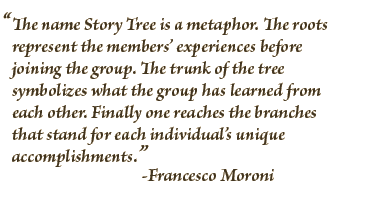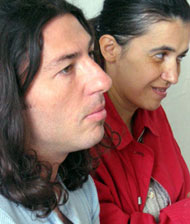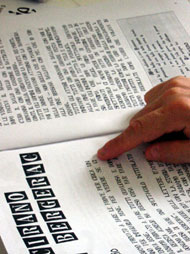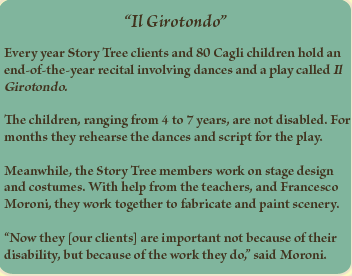 |
|
 |
|
|
The Story Tree also tries to change the public’s attitude towards the handicapped and mentally ill. “We want to make you aware that they are individuals and that the person goes further than their handicap,” he said. Here are some other examples of transformations made possible through The Story Tree:
The Story Tree grew from Moroni’s university thesis, which focused on how disabled people live day to day. In 1998 he and four other teachers created Cagli’s first center for disabled persons. There were nine original members with problems such as Down syndrome and schizophrenia. Six years later, the group has grown to 14 members whose ages range from 18 to 45 years old. Monday through Friday from 9 a.m. to 4 p.m., teachers work with the members on a wide variety of skills. For example, Moroni focuses on physical rehabilitation, practicing endurance and muscle-building exercises. He brings the group to the local pool frequently. Giuseppe, a member with severe physical limitation, is now able to get from the pool into the wheelchair by himself. |
|||||||||||||
| The teachers start each day with an assembly in which they discuss what they will do. There, the students separate into two groups, one for those who can read and write and the other for those who cannot. At 2 p.m. the groups meet to discuss the day’s events. Teachers use a game-playing technique to make the classes more enjoyable and learning more natural. The emphasis is on doing the activity, not how well it is performed. For example, the group plays a version of musical chairs to improve listening and motor skills. In another game students have to keep a balloon from touching the floor by hitting it with their fingers. This improves hand-eye coordination. There are two major outings a year. During one, the students spend a week in the mountains, and during the other they stay a week at the beach. The group also leaves the center to visit local schools, offering the Story Tree members a chance to interact with Cagli’s children. “The people responded very nicely and that is why they (the clients) feel comfortable making themselves visible,” Moroni said. These excursions show the clients that they are “specially abled” rather than “disabled,” he said. For example, clients learn that their motor skills may be limited but that their perception of emotion may be advanced. The Story Tree believes that it is important to be an individual whether or not you fit in with what society expects, Moroni says. It emphasizes independence, awareness, and identity to integrate the disabled into society. This integration is only possible with a cultural change, Moroni said. This is difficult because “what makes them the same as us is shadowed by what makes them different.”
|
|








